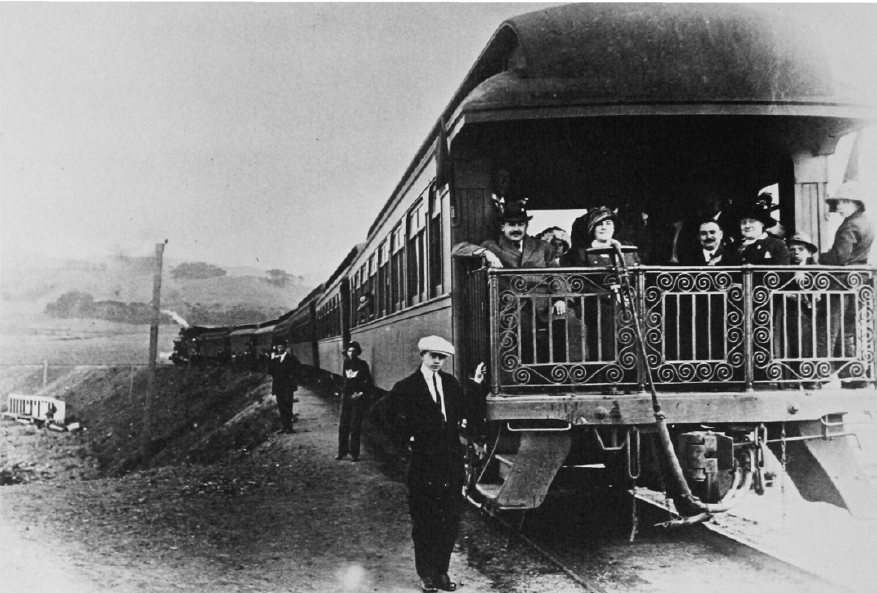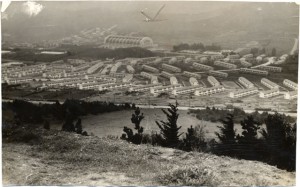 It has been a long time since railways in North America counted as anything like new technology or even, in many areas, crucial infrastructure. Still, even as recent U.S. funding for high-speed rail lines seeks to make rail travel cutting edge again, the deep legacy of the golden age of rail still marks the continent in persistent, and sometimes surprising ways.
It has been a long time since railways in North America counted as anything like new technology or even, in many areas, crucial infrastructure. Still, even as recent U.S. funding for high-speed rail lines seeks to make rail travel cutting edge again, the deep legacy of the golden age of rail still marks the continent in persistent, and sometimes surprising ways.
Many of the small towns in my home province of Saskatchewan, for example, exist only because they fell at regular intervals along nascent trunks and spurs, and they still bear the names of foreign places and railway functionaries doled out by surveyors in alphabetical order. Allan, Bradwell, Clavet … on to Zumbro, and repeat.
Larger centers, such as my current hometown of San Francisco, were marked by rail lines in different, but equally lasting ways. Few people other than riders of the Caltrain commuter service here are aware that the gleaming, high-tech Bay Area has its own rust belt of derelict and barely-hanging-on industrial sites, stretching along the rail line from near downtown south into San Mateo County, along the marshy shores of San Francisco Bay. Many vistas in the San Francisco region, whether shaped by nature or man, are deservedly renowned for their splendor. Those along the Peninsula rail line, equally deservedly, are not.

When rail freight dominated American transportation, industry clustered along the rail lines, especially within the generous land allotments, or rights-of-way, granted to the railways in the early days of their construction. That public largess may have been a sensible incentive at the time. But in a city where enough land to park a bungalow can cost $600,000 or more, wrecking yards, scrap dealers and shuttered fabricators surely can’t last long.
There’s just one problem: America might not make anything anymore, but her former industrial glory has left behind millions of acres of contaminated land, much of it along rail lines. And that’s a big part of what’s keeping redevelopment of so-called brownfield sites—contaminated, but not ferociously, Superfund-ily, so—from moving ahead.
I’ve tracked brownfield remediation for more than a decade, so imagine my delight when I discovered we live just over the hill from one of the ten largest projects in the United States. It runs along the former Southern Pacific Railroad right-of-way in San Francisco’s Visitation Valley neighborhood and the far northern reaches of San Mateo County. Plans are in place for a $500 million remediation and redevelopment of nearly 20 acres formerly occupied by a Schlage lock factory, and a Southern Pacific Railroad maintenance yard.
I’ll follow the Visitacion Valley Redevelopment project as it moves forward. Basic remediation has already begun, with the demolition of the former factory buildings and most of the rail yard infrastructure (a few buildings and facades have been left in place). Some 22,000 cubic yards of heavily-contaminated soil have already been removed, and over the past month or so, crews have been injecting what remains with thousands of gallons of vegetable oil. That’s right—vegetable oil. I’ll write more about why that should be so in a future post. But for now, here’s a view of what surely must be the most overlooked corner of San Francisco … click the center of any image for a much larger version.
[slideshow exclude=1324,1325]
Credits Top: Unknown. San Francisco’s old Ocean Shore Railway was a vastly more refined affair than its Bayshore equivalent. Middle: foundsf.org. Slide show: the author.
I remember railways and trains during the early days of American where white people migrates to certain states and being ambushed by native Americans that lives on the mountains.
Early North American railroads represent a full transfer of technology from the British mother country to its culturally contiguous two daughter lands across the Atlantic, America and British Canada.